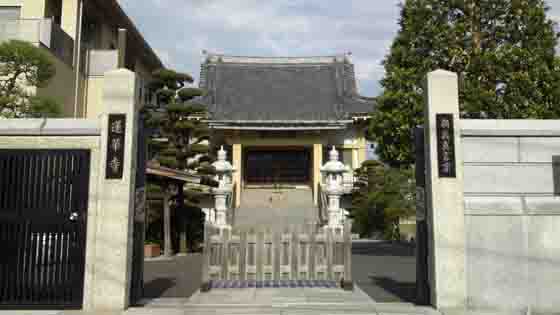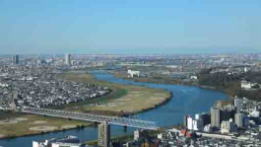Nakayama is in between Narita And Haneda International Airport
<クッキーについての同意並び欧州居住者向けプライバシーポリシー>
中山・下総・散歩道
船堀・一之江の散歩道walk on funabori & ichinoe
A Walk On Funabori, Ichonoe and Kasai




There are amazingly beautiful seasonal views along some water parks and historic landmarks in old temples in the areas around Funabori, Ichinoe and Kasai in Tokyo. Though they are residential areas now, there were large dump areas that Socho, a renga poet in Muromachi Period, described the lands in those areas in his book 'Azumazi no Tsuto'. Myoshoji Temple and Myouonji Temple and many temples standing near the water parks have been believed by many people before Edo preiod might be built on dry lands in those dump areas. Late Sengoku Period, Ieyasu Tokugawa moved to Edo and he rebuilt Onagigawa and Shinkawa (Funaborigawa) River as canals to bring salt produced in Gyotoku to Edo. And after the completion of the great project that Tonegawa River moved to east, thousands of ships could pass these revers to carry thousands of products and people from northern parts of Japan to Nihonbashi. Moreover, after the project, many dry lands appeared in Katsushika-gun where people had had many floods every year and the dump lands became arable lands, then, they were called 'Edo no Daidokoro (the Kitchen of Edo)'. Ieyasu used these rivers to go hawking at Togane in Chiba. And Basho Matsuo and Ikku Jippensha used them to go Gyotoku as the gate town to the northern provinces. The areas around Funabori, Ichinoe and Kasai had been very prosperous from Edo period to early Showa era, therefore there are so many temples there as they are in Teramachi Gyotoku and it tells us how prosperous people there had been.
A walk along Shinkawa, Furukawa and Ichinoe Sakaigawa River passing through Funabori, Ichinoe and Kasai are very exciting courses for visitors who could spend tranquil time while they see seasonal plants and waters flowing in the rivers. Why don't you visit Funabori, Ichinoe and Kasai?
The Noted Spots around Funabori, Ichinoe and Kasai

The Observatory on Tower Hall Funabori
Visitors could enjoy seeing some special views of Tokyo.
A Walk Along Shinkawa River
There are some Edo style, some wooden buildings and thousands of cherry trees along the river.
Thousands of Cherry Trees along Shinkawa River
In spring, thousands of sakura along it beautifully bloom.
Shinkawa Nishi Suimon Hiroba Plaza
There are a Edo style fire lookout and an old lock gate in the plaza.
Furukawa Water Park
It is the first water park in Japan and a famous spot for viewing Sakura and hydrangeas.
Honkakusan Myoshoji Temple
There are some seasonal flowers blooming in every season, sakura especially blooms beautifully.
Ninoe Jinja Shrine
There are several tall pine trees and a 500 years old giant zelkova tree in the shrine.
Kaishosan Rengeji Temple
The principle image is the statue of Sho Kanzeon Bosatsu carved by Gyoki.
Kumano Jinja Shrine
There is a stone tablet scribing a haiku poem written by Basho Matsuo.
The Remain of the Ferry at Imai
The ferryport at Imai is appeared on an essey written by Socho, a renga poet in Muromachi period.
Ichinoe Sakaigawa Water Park
The park has many sakura and seasonal flowers, visitors could enjoy all seasons.
Iousan Myouonji Temple
It has the legend 'the One-eyed Crucial Carps' telling the miracle power to cure eye diseases.
Ichinoe Makkotei Residence Park
In spring, weeping cherry trees bloom, in fall, colored leaves decorate the garden.
The Residence of Ichinoe Nanushi Yashiki
The traditional Japanese style residence with a thatched roof.
Honkosan Joryuji Temple
It is an important temple to know the history of Ichinoe area.
Chogyosan Daiunji Temple
It has tombs of Kabuki Yakusha and it is called Yakushadera.
A Walk Along Edogawa River
The areas along the river have many noted spots that people could enjoy history and culture.
A Walk Along Shinnakagawa River
There are some historical and cultural spots along the river.Slide Show Movies of Cherry Blossoms along Shinkawa River
Sakura Blossoms called Shinakwa Senbon Sakura in 2020
Sakura Blossoms called Shinakwa Senbon Sakura in 2019
- 広告 Advertisement -
